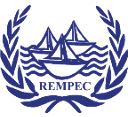Croatia

National & regional system - response strategy
Monitoring and Evaluation
| Satellite image | Prevention: satelite monitoring (article 32) |
| Aerial surveillance | Prevention: observation/monitoring from the air (art. 32) Response: aerial surveilance (article 74) |
| Naval surveillance | Prevention: observation/monitoring by maritime patrols (article 32) Response: from vessels (if aerial surveillance is not possible) (article 74) |
| Forecasting models | Not specifically mentioned in the Plan, but the elaboration of the assessment of risk and sensitivity of the area covered by the NCP will be prepared with a view to achieving efficiency in the implementation of NCP in relation to potential marine pollution and to determining priorities regarding protection and/or restoration of the marine environment and selecting the most appropriate measures for preventing and responding to marine pollution. |
Response at sea
| Use of dispersant |
Yes, to the extent of available technical and human capacities. |
| Aerial surveillance |
Articles 77 - 81 of the NCP define the use of dispersants. A flowchart describing the use of dispersants is given in Annex III of the NCP while the List of dispersants approved for use in the Republic of Croatia and in European Union Member States is given in the Annex IV.. |
| Related Legislation |
Not specifically mentioned in the NCP. |
| Delimitation zones for the use of dispersants |
Article 81 defines the areas in which the use of dispersants is prohibited. These are specified/listed in Annexes V (point 1) and VI of the NCP. In addition to the areas listed in these Annexes the use of dispersants is also prohibited in “spawning areas and in areas in which the possibility of reflux of the sea water into freshwater streams exists due to tidal action, winds or lowering of water levels in such streams”. |
| Authority in charge of authorisation identified |
HQ Commander |
| Dispersant testing procedures |
Not specifically defined in the NCP. |
| List of approved products |
The list of dispersants that “could be used in the Republic of Croatia and in the EU member States” is given in Annex IV of the Plan. |
| List of competent laboratories authorized |
Not specifically defined in the NCP. |
| Containment and recovery |
Listed in the NCP as a primary response option in Article 77 and shown in the decision tree in Annex I to the NCP. Available equipment indicated and listed in section 5 of the present ‘Country Profile’. |
| In situ burning |
Not envisaged in the NCP as a response option. |
Shoreline protection and cleanup
| Shoreline protection |
Operations for cleaning up of the shoreline are envisaged in the NCP (articles 82-84). Clean up activities are devided in preparatory activities and clean up operations (depending on the type of the coast) |
| Shoreline cleanup |
Comunication
| Operation activities |
NCP -Articles 16 (MRCC tasks), 35 (use of radio communication network), 39 (definition of VHF channels), 41-46 (alerting) and Annex I. |
| Government/Industry relation |
Not specifically addressed in the NCP |
| Public relation |
NCP - Chapter 9 (article 113) |
| Media relation |
NCP - Chapter 9 (article 113) |
Waste management
| National policy regarding oily waste |
The NCP (articles 13 states that the task of the Headquarters is also making a decision on the methods and place for the disposal of recovered material while article 83 states that prior to the commencement of the shoreline clean-up operations the places for temporary storage and final disposal (one of preparatory activities) have to be defined and asigns the responsibility for conducting preparatory activities to the relevant “HQs for protection and rescue” within the local or regional authorities’ to the Ministry responsible for environmental protection and the Ministry responsible for sea. Waste management is regulated by the Waste Act (OG 178/04, 111/06, 60/08) and other sublegal acts regarding waste categorisation, classification and management enacted according to the Waste Act |
| Treatment/disposal facilities/solutions |
NCP does not predetermine sites for oily wastes (considered as hazardous waste) storage/treatment/disposal but all wastes have to be disposed according to the existing legal framework related to waste management. |
Experts
| Integration of international experts in the coordination body |
Article 14 of the NCP states that the Headquarters may also request support and expert advices from experts. Since article 14 does not specify ‘experts’ (national or international) it is considered that international experts could also be included in the work of the Headquarters. The list of such experts should be available at the HQ secretariat. |
Claims
| Claims legal basis at national level |
Maritime Code (OG 181/04, 76/07) |
| Claims included in the contingency plan |
Chapter 8 (articles 111 and 112) |
| National structure dealing with claims |
Ministry responsible for maritime affairs (Ministry of Sea, Transport and Infrastructure) deals with claims. |
Volunteers management
| Volunteers management considered in the plan |
Article 30 of the NCP envisages the engagement of volunteers in shoreline clean up operations. Their management is not specifically defined except that they could be involved in clean up operation upon order of the Headquarters and County operational centres (COCs). |
Faune protection
| Measures for faune protection (Protected species and other marine fauna) |
NCP does not specifically indicate measures for fauna protection, but elaboration of sensitivity maps is defined as one of measures for preventing and restricting sea pollution and it will include overview of all protected natural resources (including among others and protected species). Further on, in the implementation of response measures, NCP determines priority areas for NCP implementation which includes protected sea areas (articles 81 and 94). |

